My tenth novel, A Betrayal of Heroes, published in July. It picks up the story of Spanish Republicans who fought against Europe’s Nazis all through the Second World War.
The Spanish Civil War – yes, it’s a passion
Yes, guilty! I write historical fiction. But all my stories solidly rooted in fact. My aim has always been to take special periods of history to wider audiences. And none of the periods in which my novels are set has been more special than the Spanish Civil War.
I’d already written a couple of thrillers set towards the end of the conflict. The Assassin’s Mark and Until the Curtain Falls, which follow the fortunes of journalist Jack Telford. First, as he becomes embroiled in Franco’s 1938 real-life but stranger-than-fiction propaganda exercise. The battlefield tours for Europe’s followers of fascism, the War Routes of the North. And, second, as he survives the ravages of San Pedro de Cardeña and the closing chapters in the Siege of Madrid.
The climax of Until the Curtain Falls finds Telford on board the tramp steamer Stanbrook. A remarkable true episode during which a final shipload of Republicans escaped from Alicante. The ship, with its Cardiff skipper, Archibald Dickson, sailed to Oran with the vessel’s refugees.
But what happened next?
I started to be intrigued by what might have happened next.
I knew, of course, about the awful conditions in the refugee internment camps. In Algeria, in French Morocco and in the south of France itself. I knew a fair bit about former International Brigadistas and Spanish Republican soldiers who’d gone on to fight with the Red Army. Or with partisan groups in Italy, Poland, Yugoslavia and elsewhere. Or the large numbers of Poles who stayed in France, after serving with the Dąbrowszczacy Battalion. In France, along with many Spanish loyalists, they joined the French Resistance. Or those who’d ended up in Mauthausen and Auschwitz. Or the later stories and fates of many who’d fought within the XV International Brigade.
I knew a little about the deeds of the Spanish Republicans of La Trece, the 13th Demi-Brigade of the French Foreign Legion, their battles in the Middle East, in Italy and elsewhere. Or those who joined the British Army and served in a Pioneer Company and the 50 Middle East Commando.
1. Spaniards in the Liberation of Paris
But I also knew about the liberation of Paris in August 1944. The first Allied troops into the city belonged to a company of Leclerc’s Second French Armoured Division. Yet they weren’t French troops. They were Spanish, as many readers might already know. They belonged to the Ninth Company in the Third Battalion of the Chad Armoured Infantry Regiment. The Company was by then universally known as La Nueve. Why? Because most of its soldiers were formerly members of the Spanish Republican Army. Their half-tracks were emblazoned with the names of battles in Spain. Teruel, Guadalajara, Jarama, Belchite and others. Their battalion commander was an old warhorse, Joseph Putz. Putz was a French veteran of the First World War. But he’d also commanded the XIV International Brigade as a volunteer in Spain. And who’d fought with distinction for the Republic.
On 24th and 25th August 1944, La Nueve provided support to the French Resistance. The maquis had already risen, days previously, against the Germans in Paris. And those Resistance fighters were led by Henri Tanguy, otherwise known as Colonel Rol. Tanguy had been a political commissar among the French volunteers in Spain. His best friend, Théo Rol, had died there. And Tanguy had adopted Théo’s surname as a nom de guerre.
So, between the Stanbrook in March 1939 and the Liberation of Paris in August 1944, what had happened? Was there a link, a thread between one event and the other? Naturally, there was. And it turned out this thread would inspire the story which forms the historically factual background to A Betrayal of Heroes.
2. Amado Granell Mesado – Hero of La Nueve
There’s a very direct link, of course. Among the Republican soldiers who escaped aboard the Stanbrook was the valenciano, Amado Granell Mesado. Granell had also fought throughout the Spanish Civil War. Not quite by coincidence, Granell was also adjutant to La Nueve. He’d helped to lead the company when they fought their way into Paris five years later. Granell therefore features strongly in the novel, alongside a fictional Jack Telford.
Amado Granell was the son of a timber importer from Burriana, Valencia. He married Aurora, the couple operating a motorcycle shop in Orihuela, south of Alicante. At least, until the outbreak of the civil war in 1936. He served with distinction for the Republic and did, indeed, escape from Alicante on the Stanbrook. After the war, Granell received the Legion of Honour but rejected an offer of promotion within the French army. He was a member of UGT and Izquierda Republicana.
After the War
Granell was certainly part of the post-war comings and goings between the Alianza Nacional de Fuerzas Democráticas (an alliance of various exiled Republican bodies), and the exiled Spanish monarchy. The alliance hoped, though obviously failed, to negotiate a return to democracy. But by 1950 Granell had opened a restaurant, Los Amigos, on the Rue du Bouloi, Paris. It became a meeting point for Spanish Republicans. He later returned to Spain, and finally to Alicante. He died in a traffic accident on 12 May 1972. He’d been heading to the French consulate in Valencia about the payment of a grant for his service as a French army officer.
A mention for Miguel Campos
Among many other real-life members of La Nueve, the novel also features the story of Miguel Campos. He was formerly a baker from the south of Tenerife. Campos el Canario. Campos the Anarchist. He hadn’t fought in Spain since he’d been imprisoned early in the civil war. Later in various forced labour camps. After his escape, he’d joined the French Resistance in Oran. Just in time to take part in assisting the American landings during Operation Torch.
Later, he’d joined La Nueve and, though he had no military experience, he was a natural leader. His exploits in Normandy, in the Liberation of Paris, and during the fighting in Lorraine, became something of a legend. Yet he disappeared without trace during a routine patrol in December 1944. His story is told brilliantly in the Paco Roca graphic novel, Los Surcos del Azar. It’s now available in English translation as Twists of Fate. And in 2019, when Paris commemorated the 75th anniversary of the Liberation, Miguel’s daughter Teresa – just a baby when the Spanish Civil War had begun – played a prominent part in the celebrations.
Jack Telford’s Background
Jack Telford may be a fictional character. But perhaps it’s worth a mention of the factual background which, in my novels, had brought him to Spain in the first place. I needed a “real” newspaper for which Jack might have worked, and I chose Reynold’s News. It was a hugely popular and progressive Sunday newspaper back in the 1930s. The editor, Sydney Elliott, worked hard to support the Aid for Spain campaigns. Elliott, I knew, would have been intrigued by the brochures that suddenly appeared in all of London’s travel agency windows early in 1938. National Spain invites you to visit the War Routes of Spain. An invitation to tour the glories of northern Spain and the scenes of Franco’s victories.
It was an important and often overlooked part of Franco’s propaganda strategy. One which attracted more than 20,000 tourists, from every country in Europe and further afield. An average of 80 tours each year between July 1938 and June 1945. All-inclusive holiday for just £8, and all the pro-Franco propaganda you could handle. So, why not send ace reporter Jack Telford off on one of the tours? To expose the truth behind the tour guides’ lies. He’d previously written such incisive stuff about the Saar Plebiscite. It was supposed to be just a one-week assignment. But that was before – well, before The Assassin’s Mark and before Until the Curtain Falls.
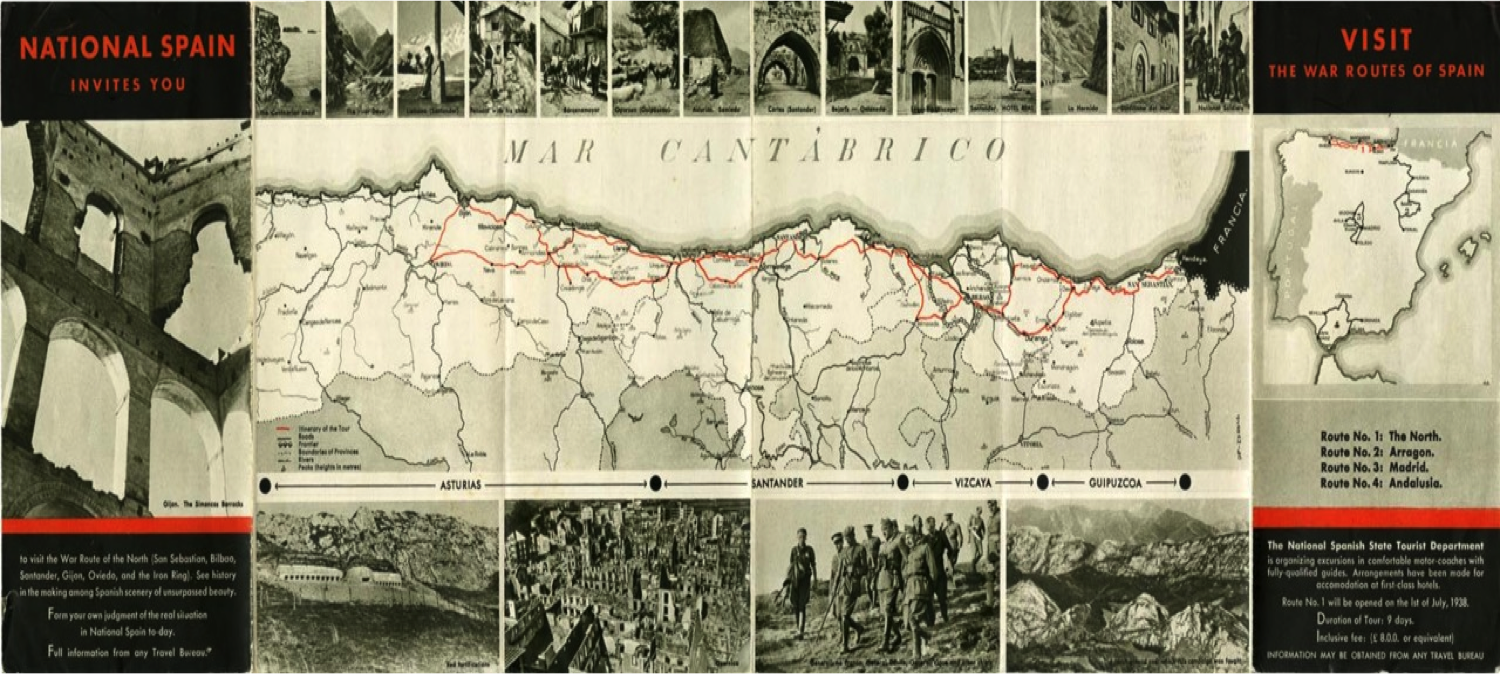
3. More Unsung Spanish Heroes of World War Two
As with those two earlier Jack Telford novels, there’s a whole lot of other real-life characters in A Betrayal of Heroes as well.
Paquita Gorroño (Francisca López Cuadrada) had been born in Madrid. She was evacuated to Valencia in 1937 and there worked for the Republic’s Ministry of Public Instruction. At the end of the war, as a refugee, she passed through the internment camps but reached Rabat in French Morocco with her husband. There she helped organise the Spanish trade unions – which remained largely intact in French Morocco. As a result, she became known as La Pasionaria Rabat. She died in Rabat itself at the age of 103, as recently as 2017.
Paquita’s story introduced me to a new world. The world of the large Spanish communities scattered across Algeria and French Morocco. These longstanding communities were trapped somewhere back in the period before 1936. As though the civil war had never happened. The old conflicts still raged.
Then, during that summer of 1944, Telford’s travels bring him into contact with other key figures of the Republic’s communities in exile. In London, Juan Negrín and Arturo Barea (then running the Latin American and Spanish launguage section of the BBC’s European Service). In Paris, Victoria Kent y Siano (formerly the Republic’s First Secretary at the Paris Embassy) and María Casares. María was the actress daughter of Santiago Casares y Quiroga, Prime Minister of Spain from May until July 1936. And in Toulouse, Rodolfo Llopis (exiled General Secretary of both PSOE and UGT).
4. The Allies’ Broken Promises
The betrayals which give the novel its title are many and varied. But they include the broken promises made to the Spaniards fighting within Leclerc’s Division. Promises that, once the Allies had dealt with Hitler and Mussolini, they would next turn their attention to Spain and Franco. After all, Churchill and Roosevelt had signed the Atlantic Charter in August 1941. The Charter set out the principles for a post-war world. A guarantee of self-government, democracy, for those deprived of it. An end to dictatorships.
Yet those promises were never kept. The men of La Nueve suffered the double agony of hearing how, in October 1944, thousands of guerrilleros, having previously liberated so many of those southern French cities like Toulouse, took the weapons supplied to them as part of the Resistance and drove a Republican wedge through the heart of the Pyrenees into northern Spain. The Aran Valley, towards Lleida. Without support from the Allies, a campaign doomed to fail. The guerrilleros finally overwhelmed by Franco’s forces.
The soldiers of La Nueve bear witness, time and time again, to those promises made by the Allies. They are recorded in their interviews between 1998 and 2006 with author Evelyn Mesquida. Interviews for her book about La Nueve. Those interviews were a great inspiration for my novel. The interviews and the huge volume by Eduardo Pons Prades, Republicanos Españoles el la Segunda Guerra Mundial. But the person who best kept my fiction within the bounds of historical veracity was Bob Coale. Bob is Professor of Hispanic Studies at the University of Rouen. He has an encyclopaedic knowledge of so much that I needed to research.
Fighting until the End
Those former soldiers of the Republic within the ranks of La Nueve, and the International Brigadistas like Joseph Putz who fought alongside them, continued their battle against fascism and Europe’s Nazis to the very end. Putz died in the fighting at Grussenheim early in 1945. And La Nueve went on to fight its final battle at Inzell on 3 and 4 May 1945, arriving at Berchtesgaden on the following day. There’s a legend that, of the 146 Spanish Republicans who formed the original core of La Nueve, only 16 survived the war. Though this must be entirely incorrect. We have details and names of all those who were killed, and they number less than forty.
The last surviving member of La Nueve, Rafael Gómez Nieto, died in a Strasbourg nursing home as recently as March 31, 2020. At the age of 99. He was a victim of Covid.
5. And Yes, There Were Spaniards Who Fought for Hitler, As Well
But what about the other side of the themes touched by the novel? There’s the reminder, of course, that 50,000 fascist Spaniards volunteered to fight as part of Hitler’s Spanish legion, the División Azul. And there is Franco’s conviction, until relatively late in the war, that Hitler couldn’t be beaten. Franco hoped Hitler might help his ambitions of restoring a Spanish empire. Beginning with the possible acquisition of Algeria and Morocco from the French.
*
Of course, this is a novel, a work of fiction, which can only give the briefest of mentions to these themes. But I hope they give a decent flavour of Spain’s involvement. Particularly the part played by Spanish Republicans and international supporters of the Republic. And I hope readers will at least take away that image of the victory parade down the Champs-Élysées on Saturday 26 August 1944. General Charles de Gaulle leads the procession, but immediately followed by the half-tracks of La Nueve. Each of them is painted with the names of those battles where the same Republican soldiers and the International Brigades had fought throughout the Spanish Civil War.
Sadly, the part played by Spanish Republican members of the Free French forces and the French Resistance has, until relatively recently, been airbrushed from history. But thankfully that further betrayal is now being corrected. And perhaps A Betrayal of Heroes might make some small contribution to that process.
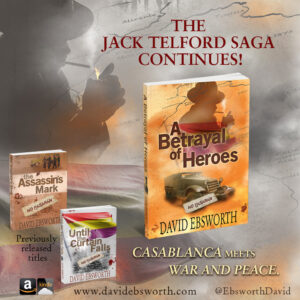
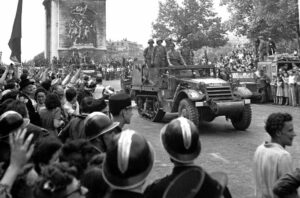
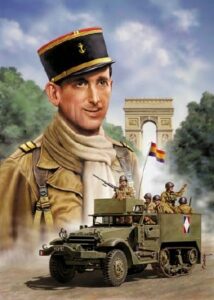
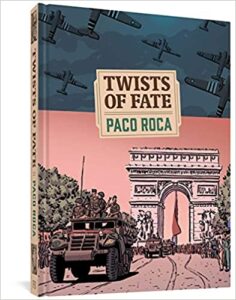
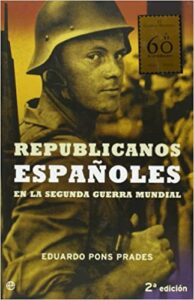
Leave a Reply